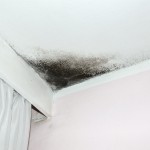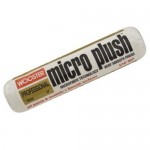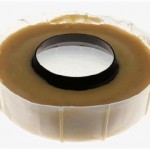
This is Hannah. Never drink out of anything she’s already used. Ever.
OK, the other day I experienced something I hope never, ever, ever to experience again. NEVER. EVER.
Let me explain. It all started innocently enough while I got the kids their dinner the other day. My wife was gone and I was in charge. I made them spaghetti-O’s and then put a pitcher of water on the table.
They ate their food, made a mess, and eventually, finished. I came behind, mopped everything up and wiped the table down and, finally, once they were all taken care of, sat down with my own dinner.
As I ate, the kids came by, one by one, and told me EVERY single thing that happened during their day. It’s great to be loved–for a while–and then it’s just mind-numbing. Story after story went through my ears and eventually, I found myself sitting at the table–my food gone–and Hannah my 3 year old–sitting on my lap–still talking.
My brain was thoroughly exhausted at this point, but I do remember grabbing the pitcher of water that was still on the table from the kids’ dinner and pouring myself a glass. As Hannah went on and on and on about this or that, I took little sips of water and tried to understand what she was telling me.
At some point, in the midst of all of this, I noticed that something wasn’t quite right. I wasn’t immediately aware of what it was, and I tried to ignore the feeling, but my brain wouldn’t let me. I took another drink of water and it suddenly hit me: I was chewing. I was done eating–had been done for a while–there was no food left on my plate . . . but here I was . . . chewing.
Now, drinking water is not normally, a chewing experience. But here I was, sitting at the table, drinking water and chewing it. And the more I thought about it, and focused on it, the more I realized I wasn’t chewing water–I was actually chewing something that was in the water.
Well, naturally, I quickly grabbed my glass and held it up to take a look and when I did, I was shocked–horribly, horribly shocked. Instead of the clear, crystally liquid I had hoped to see, it was grey. And murky. Things were floating in there: something that looked like a part of a meatball and something else that I was pretty sure was a spaghetti-O. And there were other, unidentifiable things as well. It was a smorgasbord of gray food products. All suspended in a liquid that seemed, suddenly, thicker and heavier than simple water.
I put the glass down, swallowed the meatball I was chewing and picked up the pitcher of water. A quick look inside revealed more of the same: floaty things bobbing up and down in some gray, opaque liquid.
And then I looked at the outside of the pitcher. I saw small orange, spaghetti-o sauce handprints on the handle. A closer examination revealed orange lip marks around the rim.
I looked at Hannah. “Did you drink out of the pitcher?”
She nodded and then said, “only twice.”
Well, apparently two times was enough for Hannah to poison the waterhole so to speak. I grabbed the pitcher off the table and brought it to the sink. And, as I did so . . . inspiration dawned: This was a perfect illustration of a common mistake people make when painting.
See, how many times have you started a painting project with some brushwork? You know, you start brushing around the edges–around your windows or your doors or something like that. Inside outside, it typically doesn’t matter. When you do that, what do you typically do?
And Here’s the Paint Point…
I’ll tell you what most people do: most people grab the paint bucket–the gallon of their paint–and carry it with them. They dip the brush into it, wipe the excess paint off the brush on the rim of the can, and then paint. When the brush is empty, they go back to the bucket or more paint.
That’s like Hannah drinking out of the water pitcher. If she had gone to her glass of water for a drink, she’d only contaminate that cup. Everybody else’s water would have been fine. But she went to the source and contaminated that. Once that was done, there was no way to get the spaghetti parts and meatball chunks out of it. The only fix was to pour the water out, rinse the container and fill it up with new.
With water, that’s no big deal. But if you’re doing that with paint, you can create quite an expensive and frustrating mess. If you brush into a spiderweb or pick up some dirt (this happens especially often when people are working outside), and then dip back into your bucket, you’ve instantly contaminated all of your paint. And you’ll find that out when you start rolling it onto bigger areas later. You’ll be picking little chunks of this or that out of the finish and you’ll be very frustrated.
And here’s the Answer…
The solution? Work out of a smaller container. We’ve got some at RepcoLite that are perfect for this, or you can just use an old tupperware-like container. Whatever you decide to use, remember: whenever you do brush work, always work out of a smaller container–it will protect the bulk of your paint from contamination.



 OK, Moms and Dads, has this ever happened to you? It’s happened to me a number of times, but the most recent took place a few Sunday’s ago. We were getting all 5 kids ready for 8:30 church one Sunday morning. And, of course, chaos ensued. However, eventually, because we’re such with-it parents, we managed to get everybody, including ourselves, ready.
OK, Moms and Dads, has this ever happened to you? It’s happened to me a number of times, but the most recent took place a few Sunday’s ago. We were getting all 5 kids ready for 8:30 church one Sunday morning. And, of course, chaos ensued. However, eventually, because we’re such with-it parents, we managed to get everybody, including ourselves, ready.
 Have you tried bringing color into your home only to find that it didn’t work? That the colors didn’t look good together? That they were too bold or too overpowering? And then, when that happened, did you simply go back to painting in soft whites and neutrals?
Have you tried bringing color into your home only to find that it didn’t work? That the colors didn’t look good together? That they were too bold or too overpowering? And then, when that happened, did you simply go back to painting in soft whites and neutrals?
 Mold on a bathroom ceiling is a common problem homeowners struggle with on a regular basis. However, the good news is that while it is common and while it can be a pain to get rid of, it CAN be dealt with–you just need to take the right steps.
Mold on a bathroom ceiling is a common problem homeowners struggle with on a regular basis. However, the good news is that while it is common and while it can be a pain to get rid of, it CAN be dealt with–you just need to take the right steps.

 I’ve got a number of tubes of caulk in my basement, on my shelves, that are dried out. And that number is 10. Yes. Ten 1/2 full or 3/4 full tubes of caulks of assorted colors and types that have all dried out.
I’ve got a number of tubes of caulk in my basement, on my shelves, that are dried out. And that number is 10. Yes. Ten 1/2 full or 3/4 full tubes of caulks of assorted colors and types that have all dried out.